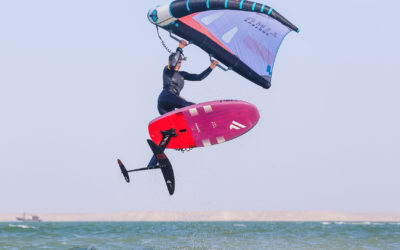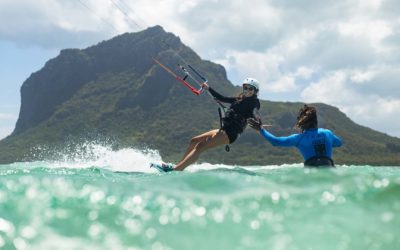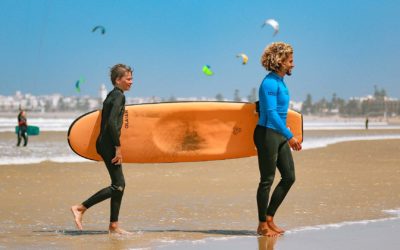Introduction to Choose Wingfoil Equipment
Riding with quality wingfoil equipment suited to your level is important if you want to progress and enjoy your time on the water! Whether you are a beginner, intermediate, speed enthusiast, or freefly lover, your wingfoil equipment will be different. As you progress, you will tend to change your board and foil more often, but it is very important not to overestimate your abilities in this sport to improve slowly but surely! Generally, we recommend Duotone equipment. Beginner wingfoil equipment is not the same as professional wingfoil equipment, and the learning curve in this sport is big but can be quite fast if you follow the right wing advice.
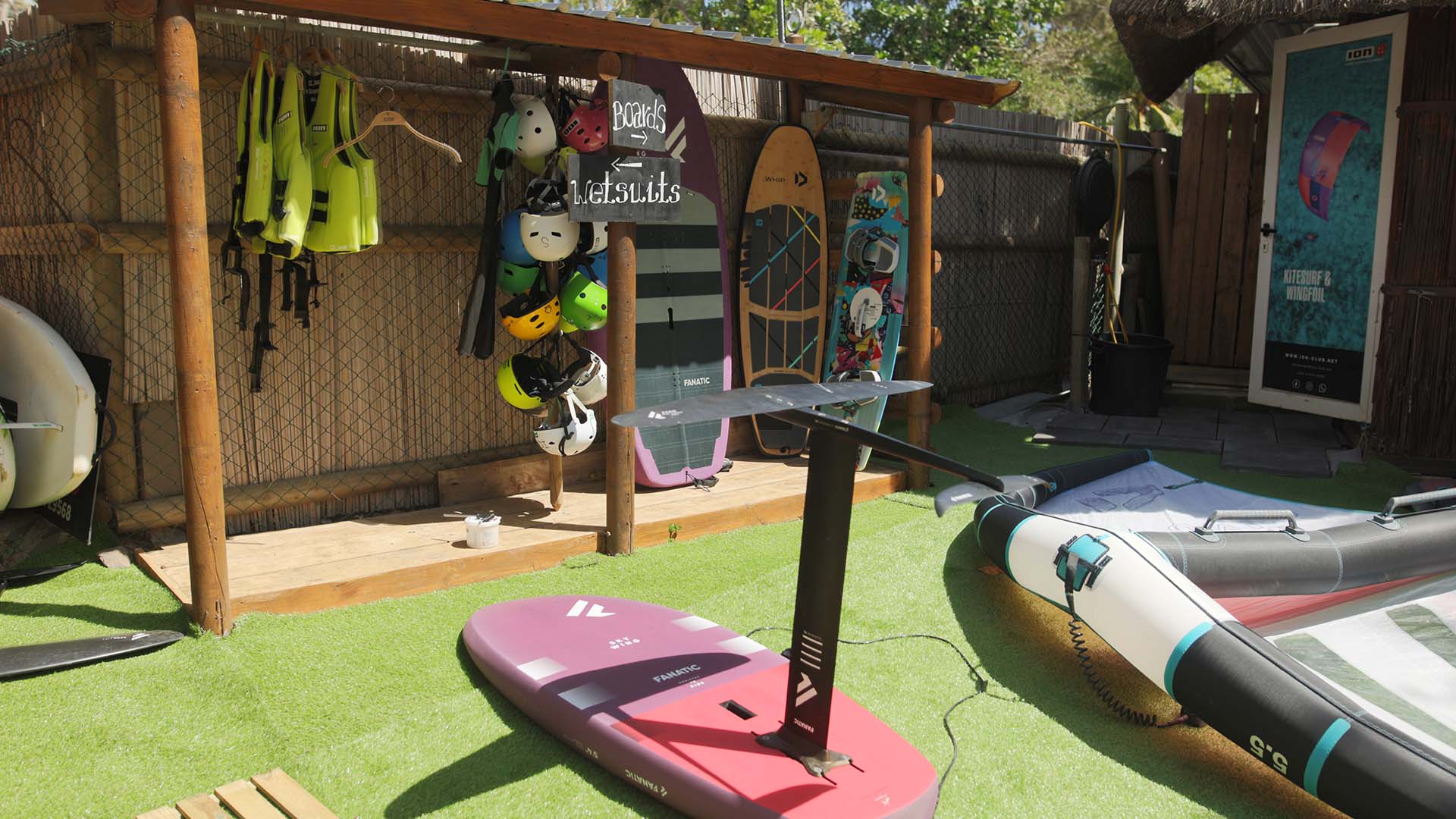
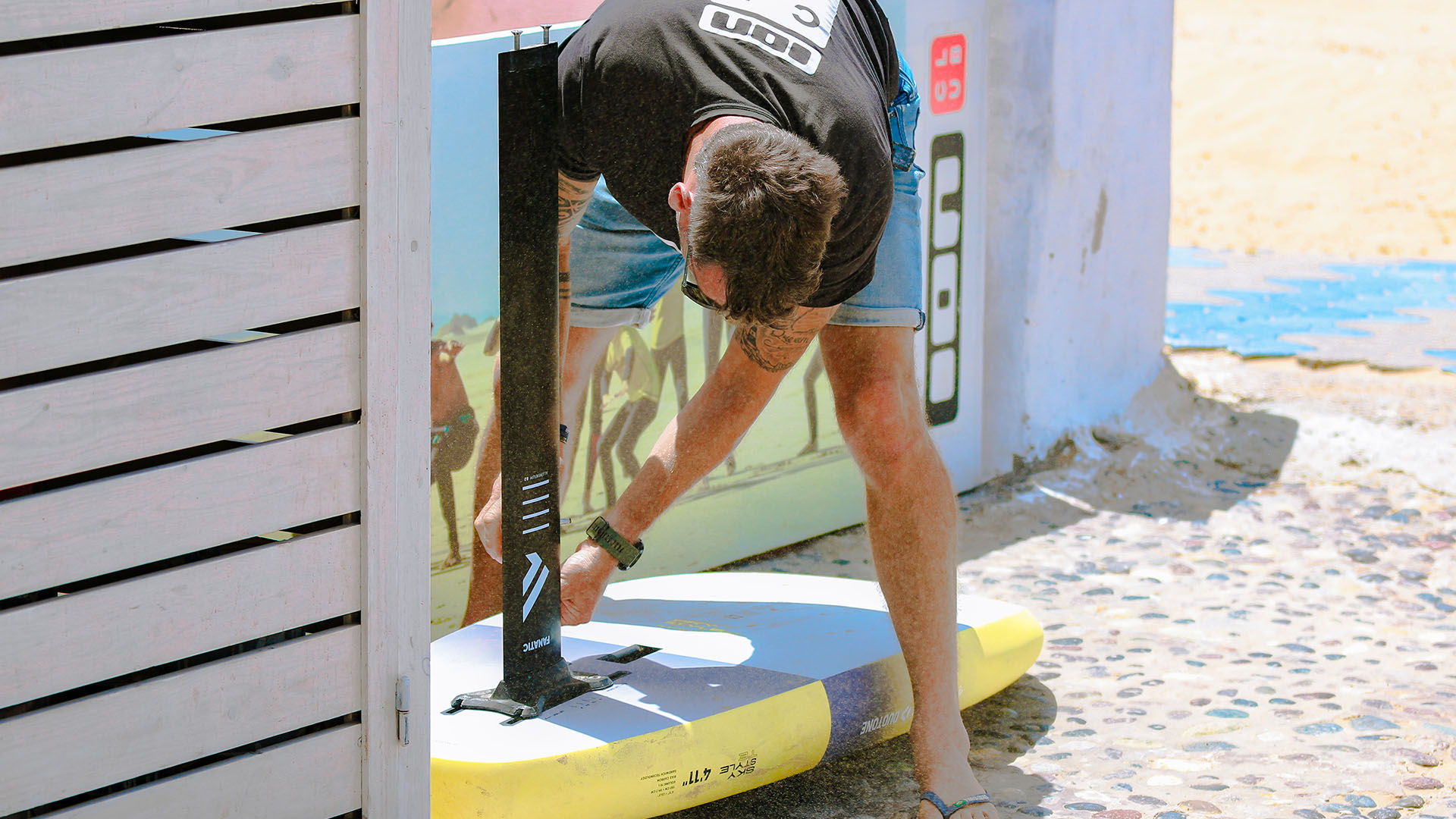
Understanding the Different Types of Wingfoil Wings
Today, many brands offer wingfoil wings, and the choice is vast, depending on your budget and comfort preferences. You need to consider the materials, which affect the wing’s lightness, power for more responsiveness and speed, rigidity for better maneuverability, whether you prefer rigid or soft handles, or if you want a window in the wing to better read the water. Some brands also offer wings with a wishbone or longer handles for more ease in holding them without having to look at where to place your hands. Additionally, some wings are designed for racing (pure speed), while others are for waves or freeriding. Finally, depending on your body size, choose the right wing surface that allows you to fly without struggling, whether to take off or not to be overpowered. Ideally, your quiver should include two wings with a 1.5m² to 2m² difference between them. For wingfoiling in 15 to 40 knots, we recommend approximately 2.5m² and 4m² for those under 65 kgs, 3m² and 5m² for those between 65 kgs and 85 kgs, and 3.5m² and 6m² for those over 85 kgs.
Selecting the Perfect Board for Your Level and Ambitions
To be stable before takeoff and flying, the ideal is to ride a wingfoil board with at least 35 to 40 liters more than your weight. Avoid taking a board that is too heavy to get airborne more quickly, and choose a wider rather than a longer one for easier takeoff. It’s very important to find the right ratio between length, width, thickness, and the outline of the board (the rails on the sides) to help with takeoff, which shouldn’t be too square or too round. Once you master planning, make good turns, and start attempting the jibe, you’ll want to switch to a shorter, less voluminous, and more responsive board to go faster and have better maneuverability. But don’t go too small; opt for a board with about 20-25 liters less than your starting board.
Which Foil to Choose for Wingfoiling?
In wingfoiling, just like your wing, the foil is a key element of your setup for flying. Placed under the board, the foil allows you to lift off and ride thanks to speed. It consists of five parts: the plate (attaching the foil to the board), the stabilizer (for balance), the front wing (for takeoff and riding), the fuselage (connecting the stab and front wing), and the mast (connecting the plate to the fuselage). When starting wingfoiling, do not underestimate the front wing surface; it’s better to go slightly larger than smaller to avoid struggling to take off and getting tired quickly. For riders under 80 kg, a front wing between 1700 and 1800 cm² will work well. For heavier riders, choose a front wing of at least 1800-1850 cm², and for those over 90-95 kgs, consider 1900 or 2000 cm². The mast height is also important; a size between 65 and 75 cm is perfect for beginners. If you wingfoil on choppy waters, opt for a slightly taller mast. The stabilizer should be between 250 and 300 cm² for beginners for better comfort in the air. Finally, the fuselage length affects stability and speed; a longer fuselage offers more stability and speed, while a shorter one provides more maneuverability and responsiveness. For beginners, choose an intermediate fuselage, around 70 cm in length.
Essential Accessories for Wingfoiling
Many accessories are essential for proper wingfoiling, especially for safety. Start with a neoprene wetsuit suited to water (and air) temperatures. You also need two leashes: one attached to your wrist to keep your wing if you let go, and another attached to your waist or ankle to prevent losing your board when you fall. For safety, wear an impact vest and a helmet. A harness can help reduce fatigue, but it’s not recommended for beginners. Also, carry a hand pump with the correct nozzle for your wings, and always secure the pump to the wing when inflating, even in light winds.
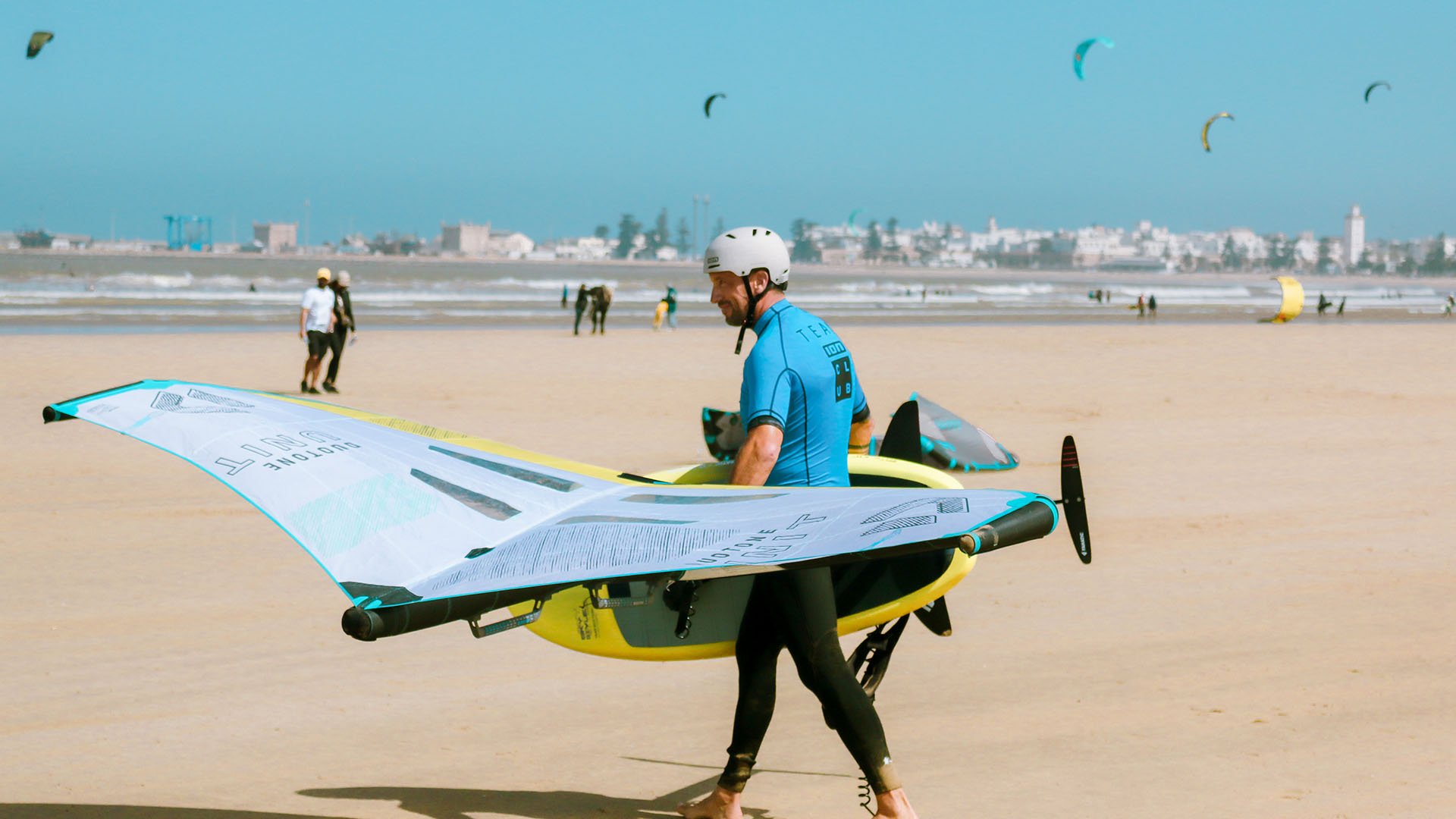
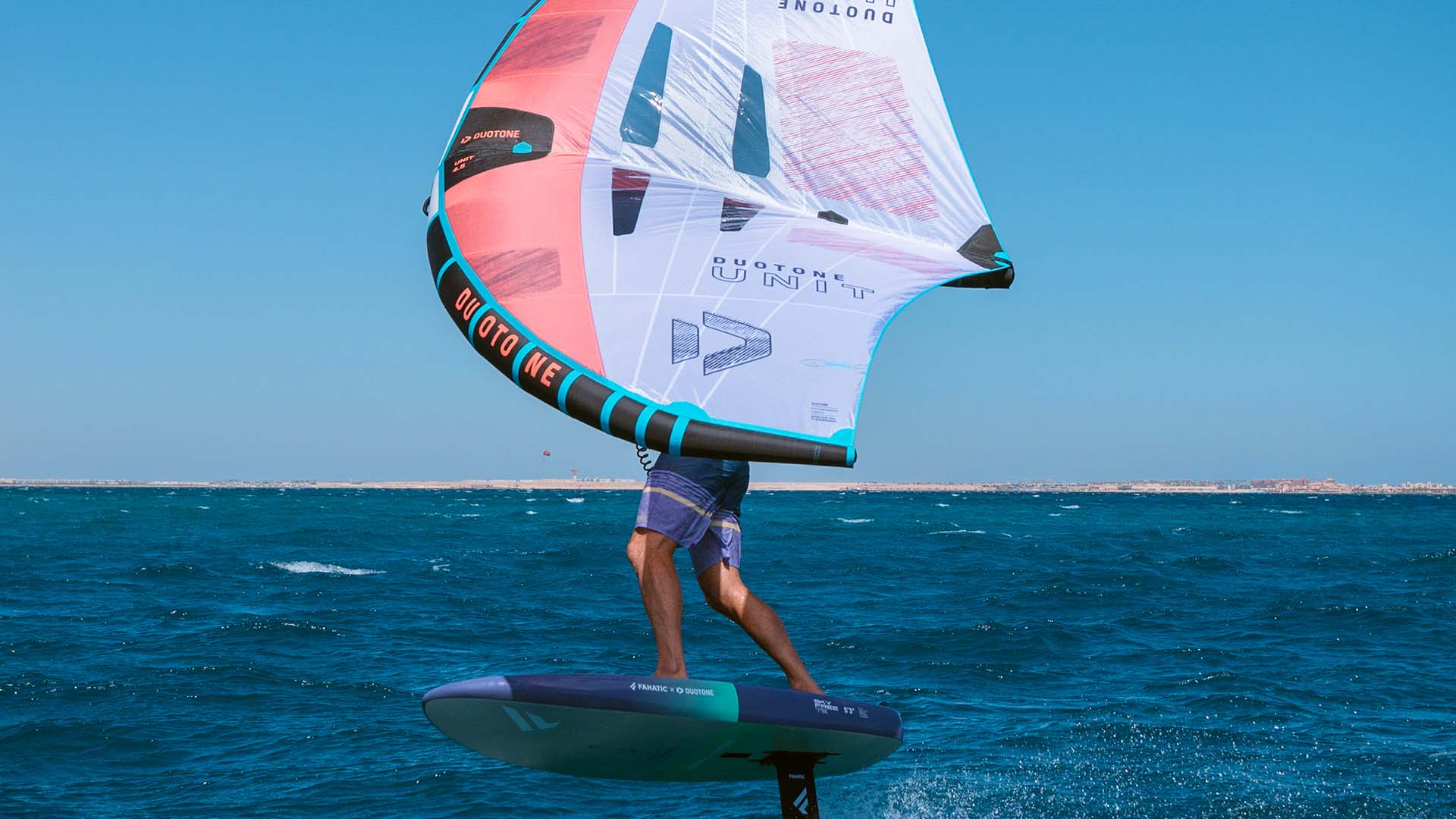
Tips for Maintaining and Extending the Life of Your Equipment
To prolong the life of your wingfoil equipment, store your board, wings, and foil in their respective covers. Avoid sand as it can damage the foil screws and the wing’s fabric. Rinse your equipment occasionally with fresh water to remove salt, which can damage it over time. After your session, carefully fold the wing to avoid damaging the inflatable bladders. Never hang your wing in the shower or on a clothesline; let it dry on the ground. Disassemble the foil periodically to grease the screws and the screw holes. Note that some foils are 100% carbon and require less maintenance than aluminum masts and fuselages.
Common Mistakes to Avoid When Buying Wingfoil Equipment
To progress without getting discouraged and to learn safely, seek advice from surf shops, friends who already wingfoil, watch tutorials online, or read buying guides in specialized magazines. Don’t overestimate your abilities and don’t rush! The financial investment for beginner wingfoil equipment is significant, so don’t make mistakes! Choose a board with about 40 liters more than your weight, a foil with a front wing of at least 1750 cm², and an inflatable wing of 4 or 5 m² (4 m² if you weigh less than 70 kg). If you buy equipment that is too small, it will not help you to progress. It’s better to get slightly larger equipment (board, foil, or wing) than smaller. Lastly, for beginners, choose flat water or slightly choppy conditions and wind around 20 knots for easier flying than in lighter winds.
Master Wingfoiling Like a Pro: Advanced Techniques Revealed!
The Evolution of your Wingfoiling PracticeWingfoiling is a sport where the basics can be acquired fairly quickly for kitesurfers, and especially for experienced windsurfers. Novices in the world of watersports will need more time, as knowledge of the wind and balance...
Getting into kitesurfing: Essential tips
What is kitesurfing, and how does it differ from other watersports?At the end of the 70´s French waterman and adventurer Arnaud de Rosnay invented the parafoil, a kind of kite that pulled him along while he was seated on a very large board. This revolution in the...
Surfing in Essaouira: Everything you need to know before your trip!
The Waves of Essaouira: A surfer's paradise 🏄♂️The Waves of Essaouira: A surfer's paradise or `the city of the trade winds` has been attracting windsurf and kitesurf enthusiasts for many years, as the wind frequently blows in this region. However, it is also a little...

